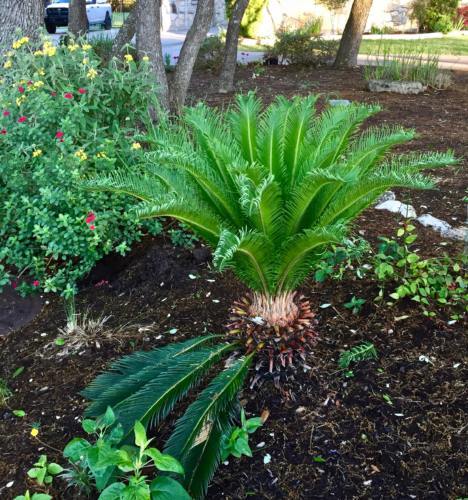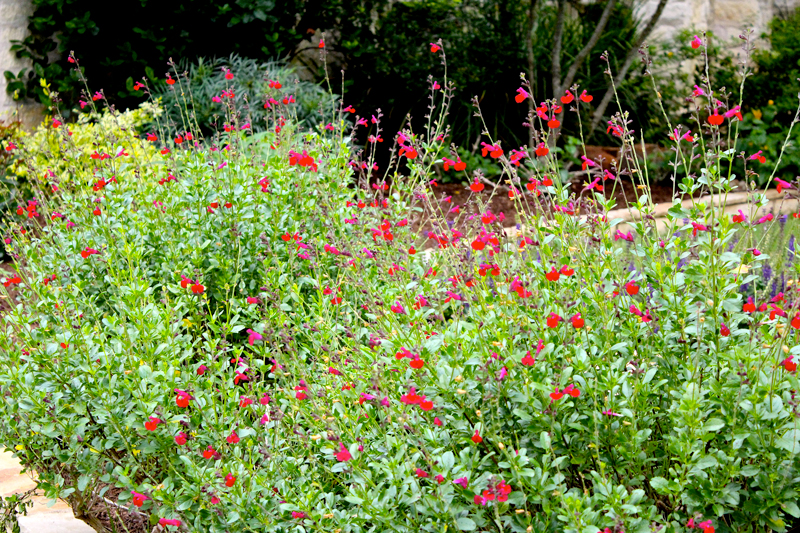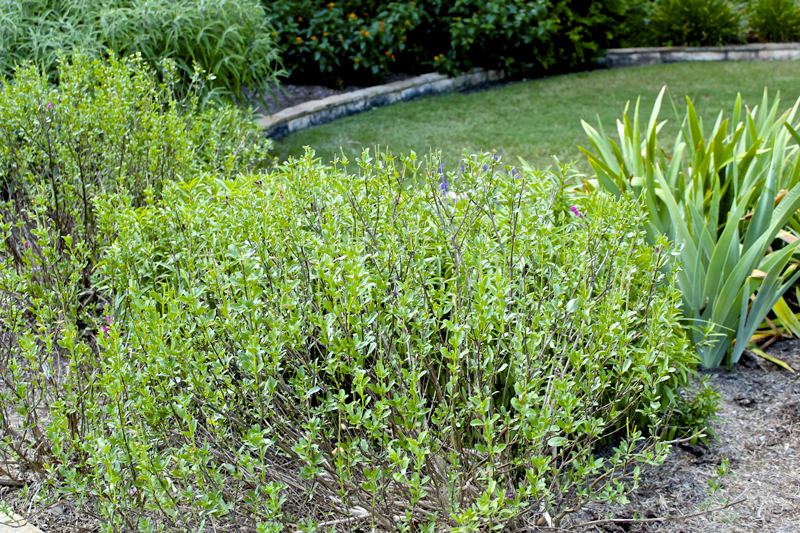How to prune sago palms after damaging winter…



With this spring’s unprecedented (some might say relentless) rainfall, most garden perennials have flourished. Ample water followed by summer sun has ensured plentiful blooms in our gardens. But as the heat rises, many root-hardy, woody perennials are reaching the end of their bloom cycles.
Unlike cooler climates, we are fortunate to have two bloom periods between the beginning of spring and the end of fall. Because our fall weather is so temperate, we have plenty of time for another bloom cycle before the first frost.
When the scorching heat begins to abate in September, we begin to see cooler temperatures at night. This respite fosters renewed plant growth. Plants produce flowers as the precursor to seed production that begins the life cycle all over again. When we prune plants after they’ve finished their summer bloom cycle, we stimulate new growth and production of blooms.
The beginning of August is the perfect time to take your pruners in hand and give your perennials a good haircut. Unlike deadheading spent flower heads, which can be done all season long, perennials should be sheared — cut back all over – by one third to one half. Don’t worry if you cut off some existing blooms, a new flush of blooms can appear in as little as a few weeks.

Not only will shearing help ensure a second bloom cycle; it will also help to keep the plants from becoming leggy.
Short-handled pruners or long-handled loppers are the best tools for shearing. Power hedge shearers are not as easily used on woody perennials – they are best used on large hedges. Manual pruners provide a clean cut and allow for more control. Be sure to sterilize your tools with rubbing alcohol between plants to prevent any possible spread of disease, and remove all plant clippings from around the plant.
Root-hardy woody perennials that can be sheared for a second bloom cycle include plants like lantana, salvia, esperanza, Turk’s cap, rock rose, Pride of Barbados and other perennials that die back to the ground during the winter, coming back from their roots in the spring.
Local Landscape Designer and Garden Coach Diana Kirby provides landscaping tips at http:/www.dianasdesignsaustin.com and writes a garden blog at https://www.dianasdesignsaustin.com
Unlike last year, when many of the perennials in our gardens lived and even bloomed through the entire winter, this year the pendulum has swung the other way.
After repeated record cold temperatures, we’ve all been reduced to watching our gardens turn to mush, sticks and crackling paper. The colors du jour are brown and black and rotten. The kind of severe freeze damage we’ve had this winter has left even the most seasoned gardeners wondering what will live and what will die? Is it dormant or is it dead?
We’re on the home stretch now – we only have a few more weeks with a danger of frost left. According to the USDA Hardiness Zone map for the Austin area, our average last frost occurs between March 1 and March 31. It’s typically the middle of March. (But don’t forget, it hasn’t been a typical winter.)
So, it’s time to think about pruning back our dormant plants – to clean up the dead limbs and to stimulate new spring growth.
First, assess the damage on your dormant perennials – plants like Lantana, Esperanza, or Salvias. If you scrape along the stem of most woody perennials you will be able to tell whether it is alive or not. Scratch and look for any signs of green, particularly near the base of the plant. Normal pruning of most of our perennials will suffice if the plant is just dormant and not dead. Many of our woody plants can be pruned entirely to the ground. Just make clean sharp cuts leaving about 6” of stem above the ground. If you want to leave some size and shape on the plant, just prune back to healthy tissue at the size you like.
Now that everything is looking clean and starting to bud out, don’t be tempted to fertilize newly-pruned shrubs. They need to use all of their energy to begin new growth and fertilizing now will over-stress them. Wait until later in the spring – at least a month — when they are established again.
But what do we do with succulents and agaves? Many of our aloes, agaves and their cousins just bit the dust in this freeze.
Ironic, isn’t it?
Many Central Texas gardeners bought these plants to expand the drought tolerance palette of their gardens in last summer’s scorching heat. Then this vicious and unusually-cold winter reduced many of them to pulp!
Freeze-damaged succulents are usually a lighter color, almost white, soon after the freeze. Later, the damaged part of the plant will wilt, and then turn black with rot. In some succulents, the affected part just eventually fall off.
On your Agaves, even with rotten or dead leaves, if the center bud is green and firm, the plant will likely to grow out and recover. However, the parts that are damaged or dead never will recover, and here is the tricky part. For these types of plants, it is important to cut out only the dead parts, whether that is a whole leaf or only a part of one. It is a risk to prune living leaves on these kinds of plants because it invites infection, and when the plants are stressed out anyway, they are more susceptible to disease. Be careful also to look for little pups – new plants – growing under the dead plant when you remove dead leaves.
The same applies to palm trees: If the bud is fine, the plant will probably live. Cut off dead or highly damaged leaves once it is warmer. Palms grow in the warm spring and through the summer, and may look much better by the end of the summer. Just give them time.
Cycads – Sago Palms
Many Austin gardeners enjoy the drama of large Sago palms in their landscapes. Not actually palms at all, Sagos are actually cycads. Temperatures in the high teens like we had this year can frost-damage leaves which may turn yellow or brown. These should be removed to reduce stress on the plant and encourage new growth. If the trunk and leaf crown are hard wood, it should recover. If the trunk turns soft, your sago may be damaged beyond recovery. Because they do produce new pups from the trunk, it might be worth cutting off all the leaves and just leaving it in hopes a pup will sprout later in the spring.
Cacti
Cacti are very sensitive to pruning timing. While they may look really bad with their dying pads and stems, it is important to wait until it is really warm to prune them. Then dust the big cuts with sulfur to help dry out the cuts. Jointed cacti regenerate really well, but the columnar ones should to be cut back to the base or you will just end up with a permanent stump. If the plant is oozing, you can give it a quiet burial.